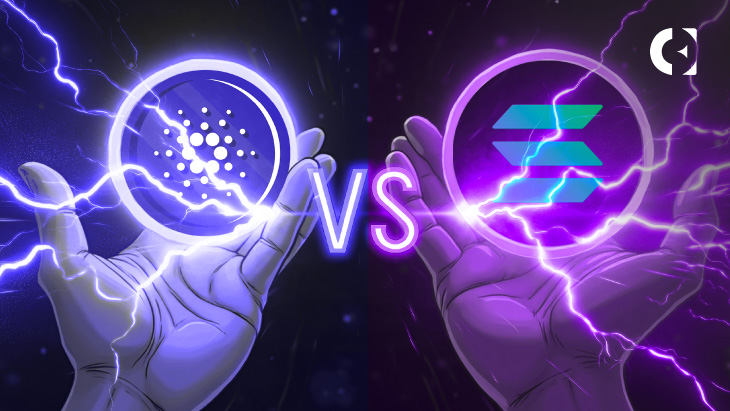- Cardano (ADA) offers a measured, peer-reviewed approach focused on long-term security.
- Solana (SOL) focuses on high-speed performance and is gaining significant institutional interest.
- The choice depends on an investor’s strategy: methodical growth vs. current momentum.
Cardano (ADA) and Solana (SOL) have emerged as two of the most hotly debated contenders for the top spot in the digital asset space, offering compelling narratives and active ecosystems–but the question remains: which has better growth potential by 2026?
Cardano: The Case for a Measured, Foundational Approach
Cardano, founded by Ethereum co-creator Charles Hoskinson, has consistently prioritized a methodical, peer-reviewed development process. This academic approach aims to build a highly secure and decentralized foundation, though it has sometimes been criticized for its slower pace of deployment. But then, this very approach might soon yield tangible returns.
In a recent livestream, Hoskinson proposed allocating $100 million worth of ADA from the Cardano Foundation’s treasury into Bitcoin and Cardano-native stablecoins (USDM, USDA, and IUSD) to support ecosystem liquidity.
The idea, still under review by senior leadership, aims to supercharge Cardano’s DeFi sector, which has struggled to gain meaningful traction compared to Ethereum or Solana.
Critics warn of potential price impact from selling such a large amount of ADA, but Hoskinson dismissed these concerns, citing Cardano’s robust liquidity and potential use of time-weighted average prices (TWAPs) and OTC deals to avoid market disruption.
From a technical perspective, ADA is at a precarious juncture. Currently trading at around $0.60, well below its all-time high of $3.10, ADA has shown signs of accumulation, with over 1.3 million staking addresses. Yet analysts warn of a final leg down in a five-wave Elliott correction pattern, with support levels near $0.51 needing to hold.
Solana: The Case for High-Speed Institutional Adoption
While Cardano aims to build cautiously, Solana is moving fast, and winning believers not just among crypto traders but traditional companies. SOL currently trades in the $140–$150 range and is riding a wave of institutional momentum that shows no signs of slowing.
The latest upgrade, Kamino v2, has already attracted $230 million in deposits and introduced institutional-grade yield strategies. Drift, another Solana-based protocol, now manages nearly $1 billion in total deposits. Unlike Cardano’s more measured ecosystem, Solana’s DeFi economy is bustling, aggressive, and integrating quickly.
Also, unlike Ethereum, which relies on external Layer 2 solutions to scale, Solana processes all operations at the base layer. This coherence translates into ultra-fast transactions, near-zero fees, and a user-friendly experience. According to Cantor Fitzgerald, “Solana’s technology is clearly superior to Ethereum in every respect.”
Several publicly traded firms, DeFi Development Corp., Upexi, and Sol Strategies, have added SOL to their balance sheets as a reserve asset. DeFi Development even secured a $5 billion credit line to fund additional SOL purchases.
Cantor’s report estimates a 75% upside in Solana-related stocks and highlights Solana’s ability to deliver dilution-free growth through staking, allowing companies to grow treasury value without issuing new shares.
If your strategy favors patient accumulation in a network slowly setting the stage for long-term DeFi expansion, Cardano might be your play. But if you’re betting on momentum, real-world utility, and the growing institutionalization of crypto, Solana holds the stronger hand.
Disclaimer: The information presented in this article is for informational and educational purposes only. The article does not constitute financial advice or advice of any kind. Coin Edition is not responsible for any losses incurred as a result of the utilization of content, products, or services mentioned. Readers are advised to exercise caution before taking any action related to the company.









